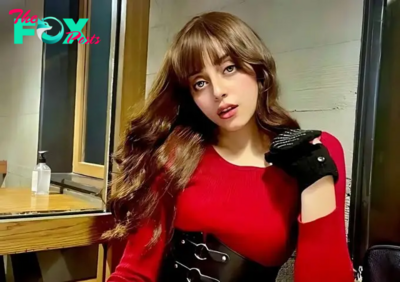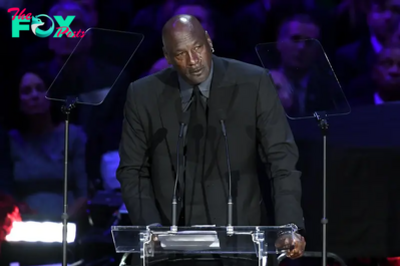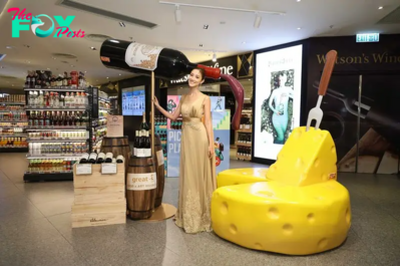Lifestyle
For Arts Sake: Shane Akeroyd on Patronage and Building a Collection
Shane Akeroyd talks about his collecting journey, the importance of supporting artists, and the joys and pains of building a public art collection.
There is a lot more to collecting than just buying art, we find out as we spend a sunny morning breakfasting at the Upper House with collector Shane Akeroyd. A long-time collector of contemporary works, Akeroyd is a Hong Kong-based arts patron and, most recently, an advocate for moving-image art, who last year launched the Akeroyd Collection, an online platform that now makes 250 moving-image pieces accessible to the public. The collection is activated and curated every few months by different guest curators, writers and artists with the idea of creating a comprehensive survey of this lesser-known medium.
But Akeroyd insists he does not want to be known as only a collector of moving-image art, saying it accounts for just around 15 percent of his collection. He has been collecting since the early 1990s when, living in London, he and his friends were inspired by the Young British Artists of the time. “We listened to music, went to concerts and nightclubs and admired musicians like David Bowie and Roxy Music,” he says. “We read William Burroughs and Jack Kerouac and liked Andy Warhol and Basquiat because they were liked by the artists we admired. Very few people wake up thinking they like William Burroughs’ “Naked Lunch” but if you pretend for long enough you end up liking it – and that was my journey growing up.”

You are famous for not using art advisors. Can you tell us why?
I have nothing against art advisors. I have a lot of friends who are art advisors but I have been lucky enough to know a lot of artists, gallerists and curators and I am fortunate to be able to call on these friends for advice. I once asked a well respected European museum director for her opinion on an artist and she said “That is a good artist, but I am not sure will ever be a great artist.” I think that is the lens I now have.
You often spend a lot of time researching before you acquire a work. What do you look for?
All collectors have different interests and mine was never what you would call decorative. I was always interested in work that was more complicated and often too complex to be commercial. Research-based practice sounds a little bit high-fly but I do spend a lot of time thinking about what I am buying and the artists I am following. Who are the best artists? What are the more interesting parts of their practice and which works are the best examples of this. Another thing is that I do not usually just buy one piece but prefer to collect an artist in depth.

Collectors play a crucial part of the art world by being patrons to the artists. Is it important to you to contribute to the art ecosystem?
Shows do not put on themselves; works do not make themselves. I can’t remember who said that. More than 25 years ago, one of the first institutions I helped support was the Institute of Contemporary Arts in London. After that I sponsored shows at the Whitechapel Gallery including Nan Goldin and Mark Wallinger in the early 2000s. I started to think about collecting and patronage in a different way. Of course there is a long History of that – Leonardo da Vinci and other great artists also had sponsors and patrons. One thing I realized was that giving away $1 was 10 times more impactful than spending $1. If you go into a gallery and you spend $100 no one cares. If you go and you say you want to give the money away to sponsor something, then everybody cares. There is this difference in utility of giving versus buying, which I figured out quite early. It is a good thing personally and also good for the system. More recently I have started to think about that in a more formal way. When I moved to New York 15 years ago I was asked if I wanted to be on the board of one of the larger museums there. I declined the invitation and instead chose to be on the board of Artists Space, a smaller non-profit where I thought I could have more impact. I chose to be on smaller boards where I thought I could add more value including Chisenhale in London and Para Site here in Hong Kong. Right now I am also increasingly focused on larger institutions including the New Museum in New York, Tate in the UK and M+ in Hong Kong. I have a long term acquisition commitment to the British Collection at Tate and have recently agreed to gift an amazing Aki Sasamoto installation which we first showed at Para Site to M+. I am also interested to sponsor projects by artists I like and collect. A recent example would be Sin Wai Kin’s piece for the Lahore Biennale.

Does your environment influence the way you collect?
I started collecting the YBAs in London, because that’s what was going on in London at the time. When I moved to New York, I spent time with more international galleries and so my collection reflected this. I moved to Hong Kong 8 years ago and now there is definitely more of an Asian flavor to the collection.
Historically I have had a habit of buying when I am excited about a particular piece but at some point a collection becomes too big to do that anymore. Recently with some degree of success I have tried to increase focus. Focus would be good advice to younger collectors. Whether that is on a practice or medium or on an artist or group of artists. More importantly, go to galleries and find someone who will spend time with you. You can learn a lot from them. This is a very good North Star to build a great collection.
Can you tell us more about your interest in moving image art and the Akeroyd Collection?
Moving-image art still is only 15 percent of my collection. I do not want to be pigeon-holed as a moving-image collector. I was buying moving image pieces from artists that I liked and collected, artists that were not just moving-image artists. Mark Leckey was one, Jordan Wolfson was one. At one point, someone said to me, “Hey, you do realize that you have a nice moving-image collection?” Now I have over 250 moving-image pieces and what I am trying to do is establish an identity in and around that collection. Anyone who has ever bought moving-image works will know that when they are delivered from the gallery, you often get a little USB, which in itself is pretty unrewarding. It is not the easiest medium to collect, but with Sadie Coles, some of the Commonwealth and Council team – another great gallery – and others, we had a lot of conversations around what makes a good moving-image collection. As well as establishing an identity around the collection we are trying to make it “available” to myself and also the public. So it is a bit different, because it is not really an organic identity, but quite a conscious effort to establish the Akeroyd Collection and an identity for moving images part of my collection.




Mark Leckey, Fiorucci Made Me Hardcore (1999)
In recent years, digital art has become a huge topic. What is the attraction to you?
It is definitely not the medium. What I mean by medium is whether it is USB, Super 8, other digital or NFT. You have to be absolutely medium-agnostic. I do have a handful of NFTs, but these just happen to be great works made by great artists that happen to be NFT, like Paul Pfeiffer. I absolutely would not encourage anyone to run after any digital medium, including NFT, just for the sake of medium. There is a lot of work that is not good and is being marketed as the next best thing just because it happens to be this crazy new media. Like any other broader format, moving image should be about the quality of the artist and the work itself.
You’ve said one of the privileges of collecting contemporary art is the ability to meet the artists. Can you elaborate?
I would encourage everybody to do as much of that as possible. A lot of the artists in my collection are now close friends. Sarah Lucas would be one of my favourite artists, if not my favorite artist. She has been a very good friend for the past 25 years, and I Travel a lot to see her shows. Joan Jonas is also one of my favourite artists. I consider it a privilege to spend time with Joan. To me it is a very important aspect of collecting contemporary art, and it also informs the collection in a positive way. Of course, the converse can be true – and I won’t mention any examples – but there are artists whom I have liked but over time realised they aren’t serious. Maybe I’m getting old and crabby, but if you don’t show up for a meeting, that’s not a good sign. We are making intellectual and serious investments and you want the artists to take that seriously.

Do you think art is a good investment?
I would never think about art in that context and I’ve never bought art thinking that is the case. I would strongly advise anyone not to. If you want to make money, you should have bought Japanese shares 18 months ago or Hong Kong shares on the open this morning, not go out and buy the next “hot” artist. That said, if I look at my collection – about 1,500 pieces – there is a group of works that have done very well in terms of value or performance. That is what tends to happen if you buy sensibly and you organise yourself properly. It is a little bit like venture capital. You have some works at the top end that fund everything else. But that is all in hindsight.
Is the Akeroyd Collection part of your legacy?
I was fortunate enough a few weeks ago to be with Pamela and Richard Kramlich, who own one of the best moving-image art collections in the world and show their collection in Napa Valley. Having an identity and association is a very good thing. When you go into a public gallery, the paintings will say they are from the collection of so and so, but if you are looking at moving-image work, it will inevitably say “courtesy of the artist or the gallery”. We are trying to change the perception a little bit by showing that moving-image works are collectible and can belong to some great collections – like the Kramlichs’.
I started thinking about legacy for a number of reasons. I have a big collection and my children are not particularly interested in running a collection. Neither do they have the means to support one, because it costs a lot of money just to maintain it. So what happens when I am not around to actually look after this thing? That was a conversation that I had with the Kramlichs. In addition if you are doing this, I think we deserve to be remembered for something well. So I started to think about buying a farm in the UK so I can put up the big artworks that I have had for years. Some that I have never even seen because physically I do not have anywhere to put them.

What’s more important to you, the concept of a work or the process of making the work?
For me, it would have to be concept. This is funny because I recently bought a moving-image work that is 400 feet of factory fresh unexposed 16mm film buried in the Camden Art Centre by a great artist called Kobby Adi. It is very, very conceptual. I will never actually be able to touch the piece, and I will certainly never be able to watch it! Concept is important for me, though I do like craft. I love it when we talk about Aki Sasamoto. One of the things I love about her is her craft. She is a very conceptual artist, but she makes some amazing things. So I think they are both important.

Art fairs or auction houses?
Art Basel is one of the best fairs in the world and that is becoming more and more important. Through all art world hiccups, you really need to be involved in the best and Art Basel has been the best for a long time. I am close to auction houses, too, and at the moment, seeing a lot of quality well priced works coming up for auction. Many of the collections from my generation of collectors will at some point respectively have to go somewhere and auction houses along with gifting are the starting point for this. The whole notion of recycling some of the work that has been sold over the last couple of decades will become increasingly important.
Would you rather be an gallerist or an artist?
I have no desire to be either but I probably have to say gallerist. I can sell things but do not have a creative bone in my body. I would be such a terrible artist and best I leave that to the geniuses.
-

 Lifestyle2h ago
Lifestyle2h agoFans react after single Kim Kardashian hangs out with $30K Tesla robot: Low-maintenance boyfriend.cau
-

 Lifestyle2h ago
Lifestyle2h agoElon Musk: 53-Year-Old Welcomes Twelfth Member to His Growing Family and Everyone Says So.cau
-

 Lifestyle3h ago
Lifestyle3h agoAishwarya Rai celebrates Aaradhya's 13th birthday, Abhishek's absence fuels speculation | The Express Tribune
-

 Lifestyle3h ago
Lifestyle3h agoWATCH: Alizeh Shah faces backlash over social media post | The Express Tribune
-

 Lifestyle7h ago
Lifestyle7h agoRevealing the Story of the Legendary Michael Jordan: At 21, He Bought 7 Supercars in One Day and Gave Away 6 for Just One Reason.Linh
-

 Lifestyle7h ago
Lifestyle7h agoExplore Justin Bieber’s Lavish Lifestyle and Vast Fortune at the Age of 29.Linh
-

 Lifestyle9h ago
Lifestyle9h agoYoung Stunners axes Sydney show | The Express Tribune
-

 Lifestyle9h ago
Lifestyle9h agoSonya Hussaiyn production selected for Cannes Film Festival | The Express Tribune





















